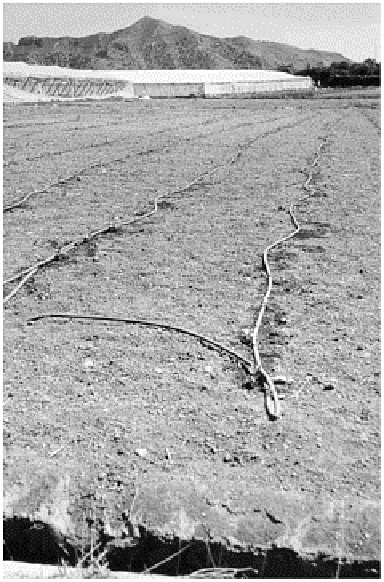Environmental Engineering Reference
In-Depth Information
Plate 27.8
Trickle irrigation in semi-
arid Spain.
Photo: Peter Smithson.
quality are good, and unless the scheme is efficiently managed, salinization can quickly
develop. Care has to be taken over disease prevention, as many harmful insects find
irrigated fields to their liking. The world is full of examples of major irrigation schemes
which failed for lack of understanding or management.
GROUND WATER
Aquifers
. The other major source of water in dryland areas is from ground water. In some
parts of the world huge aquifers lie under the ground surface. These are water-bearing
strata all or part of which is saturated with water and is able to yield significant
quantities. Originally the water pressure in some aquifers was such that drilling for water
would result in a free flow of water at the surface. Such artesian wells used to be common
in Australia, where the Great Artesian Basin under much of eastern Australia allowed
ready access to ground water. Water falling on the Eastern Highlands of Australia sank
into the water table and helped to sustain groundwater levels.
Aquifers can be found in many parts of the world at different levels below the surface
(Figure 27.9). They achieve their greatest significance in dry areas where alternative

